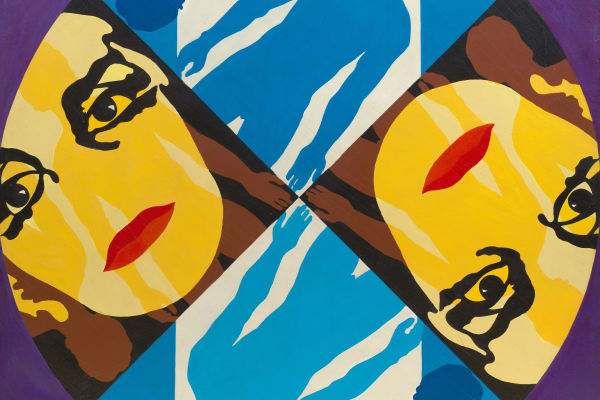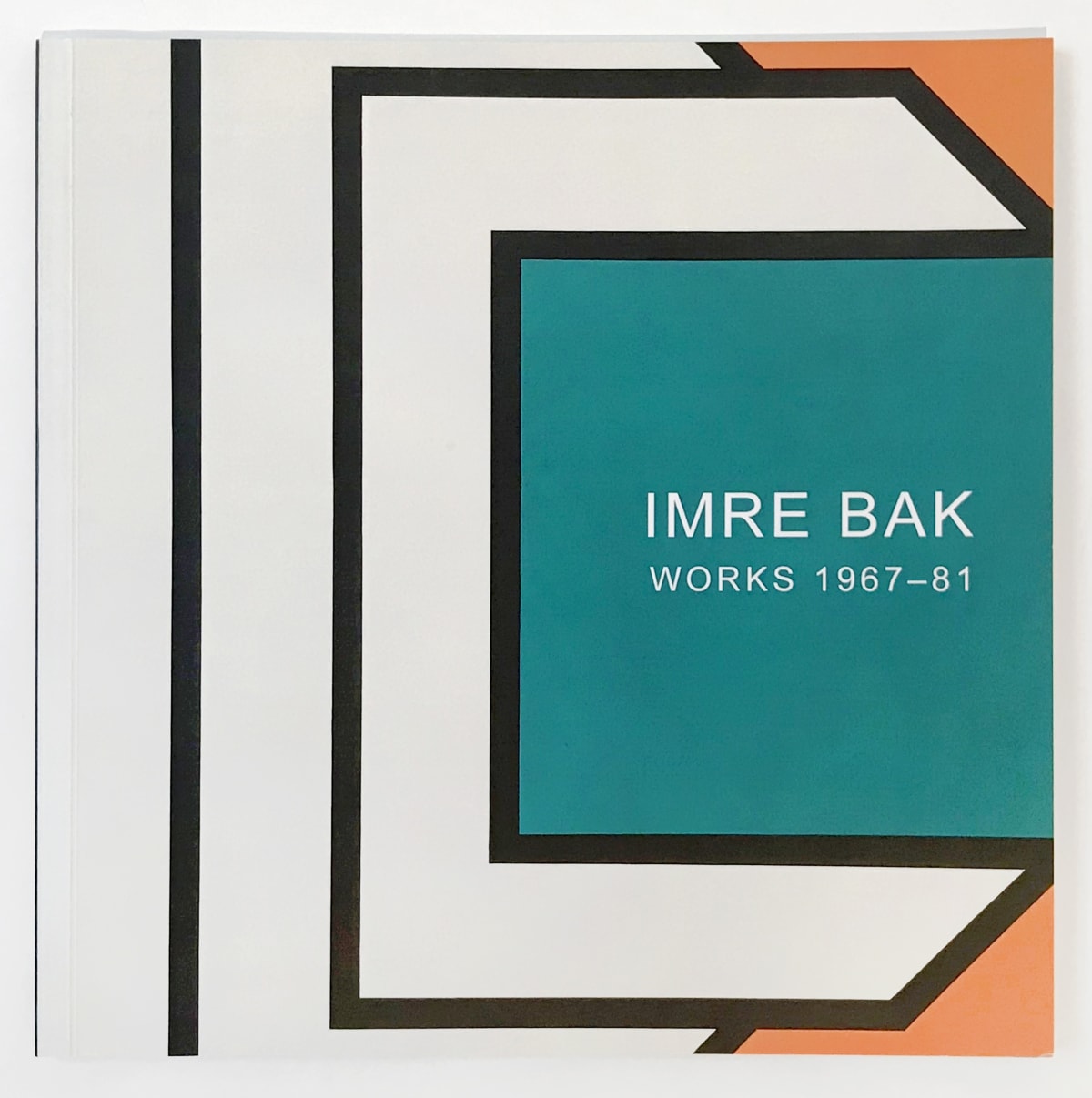Imre Bak Hungarian, 1939-2022
By fusing the universal symbolism of European and Central American cultures with some of the lessons he drew from conceptual art, Imre Bak fashioned a unique form of emblematic representation...
Imre Bak (b. 1939 Budapest) was involved in the creation and development of two leading Hungarian neo-avant-garde groups of the second half of the Twentieth century; Iparterv and Budapesti műhely. Part of the group of young ‘self-educated’ Hungarian contemporary artists from the 1960s, Bak departed from the drab browns and greys of Hungarian realism and was strongly inspired by the vivid palette of Impressionism and the forms of Cubism. In 1962 Bak travelled to Moscow and St Petersburg, where he saw for the first time works by Matisse, Picasso, Léger and Kandinski. Bak became increasingly attracted to geometrical abstract and hard edge painting. Inspired by the German Concretists, the Signal artists and American and British representatives of geometrical abstraction and pop art, Bak focused on non-figurative painting, exploring both strong, pure colour and strictly structured, sharp forms and lines in his works. By fusing the universal symbolism of European and Central American cultures with some of the lessons he drew from conceptual art, Imre Bak fashioned a unique form of emblematic representation in his works from the 1970s.
Imre Bak has exhibited widely in Germany, Poland, Switzerland, Austria, Hungary and the USA since 1966, and his works are in numerous public collections, including Tate Modern, London, Neue Nationalgalerie, Berlin, MUMOK, Vienna, Musée d’Art Contemporain, Lyon, and the Museum of Contemporary Art, Budapest.
-
 Imre BakBlack and White No. X, 1981Acrylic on canvas150 x 150 cm
Imre BakBlack and White No. X, 1981Acrylic on canvas150 x 150 cm
59 x 59 inches -
 Imre BakLabyrinth, 1979Acrylic on canvas150 x 150 cm
Imre BakLabyrinth, 1979Acrylic on canvas150 x 150 cm
59 x 59 inches -
 Imre BakSquare-circle-cross II, 1977Ink and tempera on paper28 x 28 cm
Imre BakSquare-circle-cross II, 1977Ink and tempera on paper28 x 28 cm
11 x 11 inches -
 Imre BakComposition, 1970Acrylic on canvas130 x 130 cm
Imre BakComposition, 1970Acrylic on canvas130 x 130 cm
51 1/8 x 51 1/8 inches -
 Imre BakGreen-Purple-Black, 1968Acrylic on canvas120 x 150 cm
Imre BakGreen-Purple-Black, 1968Acrylic on canvas120 x 150 cm
47 1/4 x 59 inches
-

Three Colours
12 Apr - 5 Jun 2021We are excited that The Mayor Gallery will be re-open to the public from the 12 April with our comprehensive exhibition Three Colours, Red-White-Blue . A wide range of artists...Read more -

INTERNATIONAL POP
15 Jun - 15 Oct 2020The Mayor Gallery is pleased to present a curated selection of International Pop Art featuring artists from around the world including France, USA, Brazil, China and the UK. Billy Apple®...Read more -

IMRE BAK
WORKS 1967-81 13 Feb - 29 Mar 2019Imre Bak (b. 1939 Budapest, Hungary) was involved in the creation and development of two leading Hungarian neo-avant-garde groups of the second half of the Twentieth century; Iparterv and Budapesti...Read more











